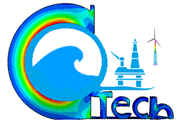Speaker
Description
In this study, risks due to a dragged anchor are evaluated to determine the required protection for a 24” Gas Export Pipeline (GEP) and a parallel Fibre Optic Cable (FOC). The risk from ship-anchors is assessed based on the AIS data gathered for the project, determining the required trenching depth(s) along the route of the GEP and FOC.
The 200 km long Gas Export Pipeline and FOC are routed from the offshore field located at nearly 3000 m water depth. After 80 km the pipeline and the cable reach the Brazilian continental shelf, and hence for the last 120 km into shore the pipeline and cable are located in areas with ship traffic along the Brazil coast and as such are exposed to the risk of damage due to interaction with 3rd parties (i.e. sinking and grounding ships, dropped and dragged anchors, fishing activities and other potential dropped objects). One of the most critical 3rd party interactions is that of a dragged anchor, which can lead to detrimental damage and loss of containment for the pipeline. In particular, any anchor-hooking interaction with the FOC is considered to result in a critical failure.
This work shows the philosophy adapted for determining the minimum trenching depth and length to protect against anchor hooking risks for the pipeline and FOC. A quantitative method to evaluate risk and failure due to anchor hooking has been used based on the new ANCRIS software developed by DNV in cooperation with Equinor. This tool accounts for variation in the depth of burial (from fully exposed to fully buried) towards the probability for anchor hooking and further utilises the “Leak Limit State” in the process of assessing the consequences of hooking for the rigid GEP. This work shows an optimization of the minimum required trenching for the GEP through using the new approach compared to the more traditional methodology given in the DNV Recommended Failure Rates for Pipelines.
| Conference Topic Areas | Track4: Structural Safety, Integrity Management and Life Extension of Structures |
|---|

